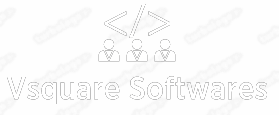Factors that Determine the Cost of Small Business IT Systems

Budgeting for information technology (IT) services can be a challenge for small businesses.While many people may imagine an IT department as a team of nerds answering computer questions, what IT system looks like differs from business to business. In general, IT systems can include: providing employee technical support for devices (desktop computers, laptops, and mobile phones), securely storing data in the cloud, monitoring devices for security threats, upgrading devices as needed, maintaining servers, implementing new software and training employees to use it.
The level of IT support that a small business needs depends on the nature of the data they are storing, the number of employees they have, and their need for software upgrades.
To support the critical tasks of IT systems, small businesses can choose from a variety of IT services solutions. Cloud storage solutions from Amazon and Microsoft may be sufficient for a small business with in-house technical know-how. However, some small businesses may require internal servers and support for employee devices. These businesses can choose to hire an in-house IT specialist or outsource IT services to another company. In-house IT specialists are typically hired on salary at a rate of $46,000 USD per year, according to PayScale. In contrast, IT services outsourcing can be purchased on an as-needed basis and expand as the company’s needs grow. Depending on the company’s needs, an in-house specialist may be cheaper or more expensive than outsourcing IT tasks. Although the appropriate choice depends on the business case, there are some benefits to outsourcing.
Benefits of IT Services Outsourcing
Companies that choose to outsource IT services may benefit from being able to redirect resources. Maintaining security and data is a full-time job for at least one employee at a small business. If a company chooses to outsource, that employee or department can be redirected to develop software solutions. As the Massage Envy Spa CIO explains in Forbes, outsourcing the company’s IT systems allowed his group to implement new processes, like massage sharing. The team was able to add value to the customer instead of simply chasing down IT issues. This resource allocation can also help smaller companies. A single internal developer that spends his time installing firewalls may instead be able to build value-adding code if relieved of IT systems duties.

IT services outsourcing also puts a whole company of experts at a small business’s disposal. Although small businesses should choose their IT services solutions provider with care, most outsourced or “managed” IT providers can provide more expertise than a single in-house person.
Want to increase your customer experience right now?
Boost your CX with tips from our industry leading whitepaper, How Fortune 500 Companies Manage Their Contact Centers
Managed IT systems can also scale with a growing small business more easily than an in-house IT department. As more support is needed, the business can purchase more customer support hours from the IT solutions provider. Increasing the number of support hours is typically simpler than going through the process of hiring and training an IT department.
While there are many benefits to IT services outsourcing, small businesses should be aware of the potential costs associated with this essential service. The budget should include funding for two different types of services, recurring and one-time. Recurring costs are expenses that occur on a regular basis, like maintaining firewalls. One-time costs only occur once. An example is the setup of Microsoft Office 365. Once it is set up for the small business, no more costs are incurred. Both types of costs should be included in the budget for outsourcing IT services.

Recurring IT Systems Costs
Determining the monthly IT services solutions cost for a small business is a bit more complicated than purchasing a monthly subscription. Each business has unique requirements, and the IT service is matched to the business’s needs. However, most IT services providers take into account at least three items:
- Number of Devices (Desktops, Laptop, Mobile Phones, and Tablets)
- Number of Servers
- Amount of Data to be Stored
To determine the cost, IT service providers estimate the number of support hours required for each item. A company that has more devices is likely to incur more support hours than a company with fewer devices. One IT systems calculator estimates the cost of one device or server to be 25 hours per year. IT services providers often charge upward of $100 per hour. Therefore, small businesses can estimate the minimum cost of device support per year using the following formula.

